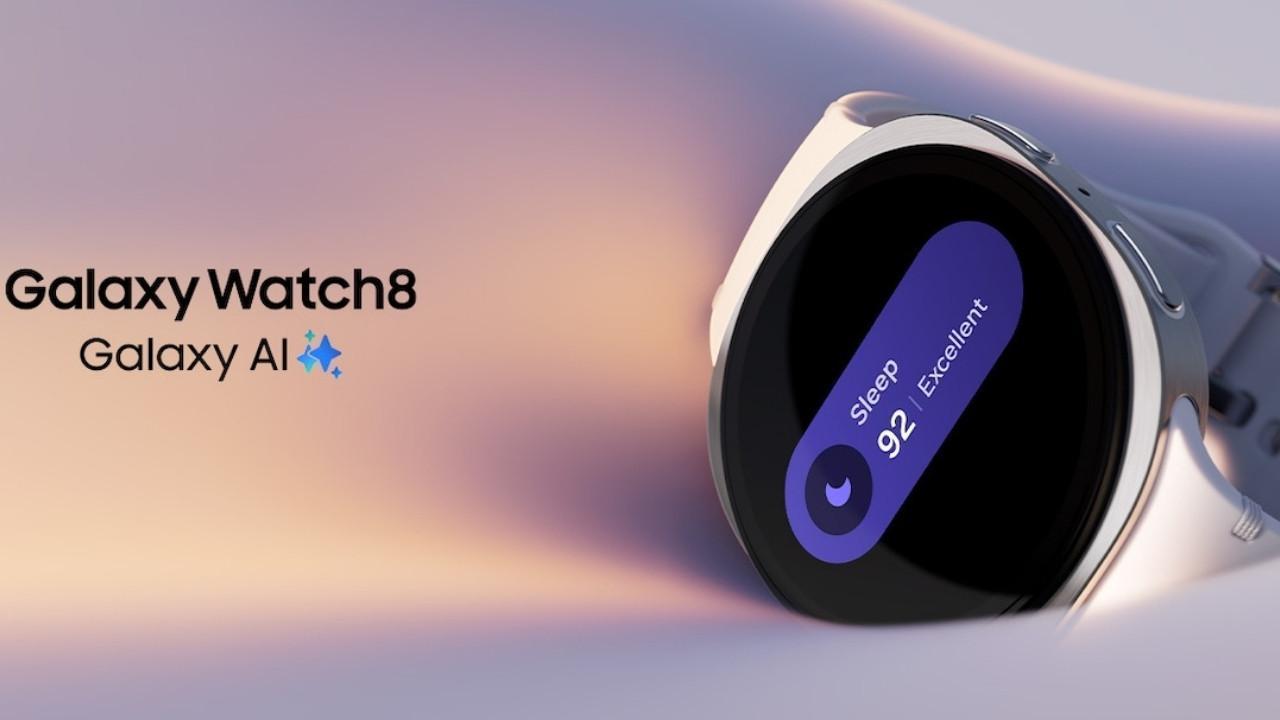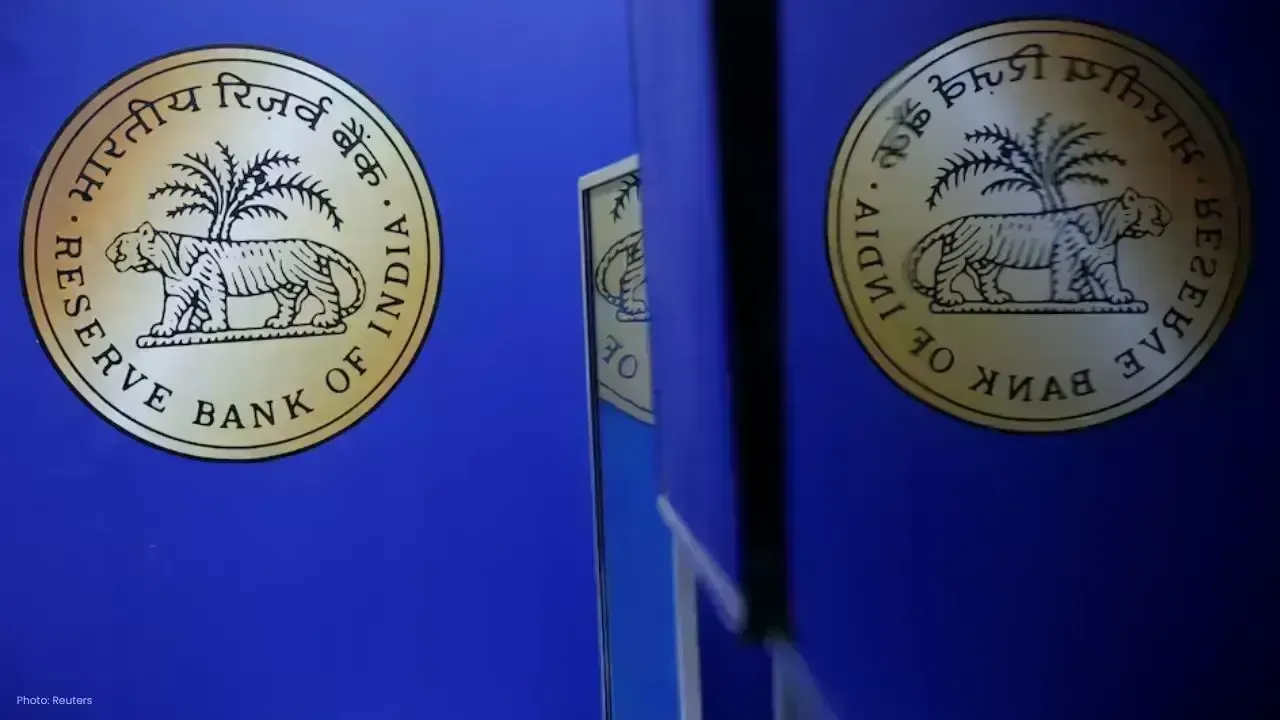You have not yet added any article to your bookmarks!

Join 10k+ people to get notified about new posts, news and tips.
Do not worry we don't spam!

Post by : Anis Farhan
Samsung has long been a leading player in the smartwatch market. With the launch of the Galaxy Watch8 and Watch8 Classic, it aims to sharpen its edge by combining premium hardware, refined design, and expanded wellness tracking. This review explores how well the two models fare in real-world use, what you gain (and lose) in choosing one over the other, and whether they make sense for various kinds of users.
What happens when a company tries to give us nearly everything we might want in a smartwatch? You get “unique abundance” — lots of sensors, more health and wellness metrics, improved design, and a wide range of choices. That is Samsung’s play with the Watch8 series. They are not radical reinventions of their predecessors, but more of a thoughtful step forward in maturity: akin to refining craft rather than starting from scratch.
Samsung offers two distinct flavors: Watch8 (lighter, sleeker, more modern in feel) and Watch8 Classic (bigger, more premium, with tactile touches like a rotating bezel). Both share many key features, but each has its own strengths. Choices include sizes (40mm, 44mm for Watch8; 46mm for Classic), optional LTE, and bands. Prices reflect these differences.
One of the first things you notice is the so-called “cushion design.” The watches combine a square-ish, cushioned outer shape with a circular screen. This hybrid shape brings several advantages. The framework supporting the lens and sensors fits better; the straps can attach more securely and sit closer to your wrist. For users who like a round watch face (classic style) but also want a modern strap design and structural robustness, this offers a sort of compromise.
Between the two, the Watch8 is lighter and thinner. It gives a more wearable feel for daily use, especially if you prefer something subtle. The Classic feels more “there” — heavier, more presence, more premium. The mechanical rotating bezel on the Classic adds a tactile joy that many will appreciate; navigating menus by touch is fine, but physical feedback still has its charm.
However, that weight and bulk do come with trade-offs. The Classic is top-heavy; depending on your wrist size and how snugly the band fits, it may feel less planted. The dynamic lug system on bands helps somewhat, letting the strap attach close, but you will notice the difference especially during active use or during sleep tracking.
Materials are premium. Finishing is polished. The screens are vivid, bright, and visible even under strong ambient light. Samsung claims up to 3000 nits in peak brightness on both models, which is impressive. Screen clarity, colour, responsiveness — these are strong. The always-on display option works well, though with a battery cost, of course.
Under the hood the Watch8 models are powered by Samsung’s Exynos W1000 chip built on a 3-nanometer architecture. That helps with power efficiency and speed. In day-to-day usage — swiping through watch faces, opening apps, dictation of messages, navigating maps — performance is smooth. No obvious lag or hesitation. Even when pushing some heavier tasks, the watch holds up.
Sensors are many. Heart rate, SpO2 (blood oxygen), sleep tracking, step counting, obviously. Samsung’s automatic activity tracking is quicker to kick in than earlier generations. The step counter, for example, stayed within a small margin compared to a premium ring tracker in testing — good consistency. New additions: Vascular Load metric that tries to gauge stress in the vascular system; Antioxidant Index, where you place your thumb on a sensor to see whether your diet is giving you enough fruits and vegetables — unique but perhaps more novelty than necessity for some users.
Also, health tracking in data depth is impressive. But in breadth lies complexity. Samsung Health app now offers many metrics, sometimes too many. For many users, seeing all that data without deep context can be overwhelming. What does “vascular load” exactly imply for your daily lifestyle? Is it actionable? And some of the data takes time to calibrate: certain metrics require wearing the watch while sleeping for multiple nights; others need correct sensor alignment.
With all these features lit up, battery life is always going to be a concern. Samsung claims close to 30 hours of use with always-on display, and an additional eight hours when it is off. Real-world use more or less lines up, though activity tracking, GPS usage, sleep tracking, frequent notifications etc. can push the battery down faster.
If you use the watches heavily — sleep and wellness tracking, frequent GPS, always-on display — expect to charge daily or every other day. For lighter users (turning off always-on display, fewer sensors in use) you might stretch to two days. Charging is relatively quick; Samsung has improved its power delivery, so a shorter charge gets you usable battery.
What makes a smartwatch is not just hardware — software and ecosystem matter as much. Samsung’s software here is mature. The user interface is polished, menus are well thought out, notifications integrate nicely; voice dictation works well. There is an AI-driven component (“Gemini” as cited) helping with things like summaries, map navigation etc. It adds polish.
The rotating bezel on the Classic isn't just for show — tactile feedback helps with navigation when your fingers are wet or in motion. The lighter Watch8 lacks this physical bezel, so navigation is touch only. That may be a deciding factor for some users who prefer that tactile route or use gloves etc.
The Health app is central. But with so many metrics, it could benefit from better clarity: more context, clearer thresholds, better explanation of what good vs worrying looks like. Some features need calibration: for certain health metrics, multiple nights of accurate data are required. Misalignment or loose fit can degrade quality of readings.
Samsung pushes well beyond basic tracking. Besides tracking steps, heart rate, sleep, SpO2, it adds metrics like vascular load, antioxidant index, etc. These are attempts to understand stress, recovery, nutrition, wellness in a deeper way. Some users may love the data-rich approach; others may find parts of it unnecessary or confusing.
Sleep tracking is solid: the watches detect phases, wakeups, breathing etc. Automatic activity detection for walking, running etc. are fairly accurate; GPS tracking is decent. The step counter came close to the benchmark in testing, showing consistency. But sometimes advanced metrics lag in clarity: e.g. what exactly does “vascular load” imply? If your heart rate had some spikes, what should you do? Samsung provides data but leaves advice kind of minimal.
Also, features like antioxidant index require a somewhat cumbersome process (placing thumb on sensor) and the utility of that metric depends on you trusting such sensor readings, which may vary by skin tone, placement, etc.
One of the strong points: display quality. Brightness is excellent even outdoors, due to the high peak brightness rating. Colours are vivid, contrast is high. The circular screen feels modern; bezels are trimmed. Always-on display gives convenience though with battery cost; with it off, you save juice.
Touch responsiveness is good. The Watch8 Classic’s bezel rotation adds another dimension: in bright sunlight or in wet conditions, or with gloves, it gives advantage.
Here are key trade-offs when choosing:
| Feature | Watch8 | Watch8 Classic |
|---|---|---|
| Weight & bulk | Lighter, more comfortable for many wrists | Heavier, more presence, might feel top-heavy |
| Bezel | No physical rotating bezel; touch navigation only | Has rotating bezel, tactile navigation, charm |
| Price | Lower cost relative to Classic | Premium cost, higher build and materials |
| Screen sizes & strain | 40mm / 44mm, more compact options | 46mm, larger face, more noticeable on wrist |
| Design statement | More subtle, modern | More classic, statement-making |
If you care about elegance and weight, and want something that is less intrusive, the regular Watch8 might suit you. If you want traditional watch feel, tactile controls, and do not mind the extra heft and price, Classic is the pick.
Feature richness – From automatic workout detection to advanced wellness metrics, sensors, GPS, always-on display, etc., there is very little the Watch8s can’t attempt.
Display & visibility – Clear screens, high brightness, good outdoor visibility.
Design & choices – The cushion build, band options, LTE support, two sizes etc. give flexibility. Physical bezel on Classic enhances usability and tactile feel.
Performance – Fast, responsive, smooth. No undue lag in switching screens or launching apps.
Health & wellness tools – Multiple new metrics, meaningful tracking features. Good for someone who wants lots of data, insights, and wants to track their health more closely.
Battery life under load – With many features active, always-on display, sleep tracking etc., battery drains fast. Daily charging may be needed.
Complexity & data overload – For casual users, may be too many metrics. Samsung needs to provide better guidance, context, simpler summary.
Weight & bulk (Classic in particular) – Not everyone will like the heft or thickness. Could affect comfort during long wear, sleep, workouts.
Accuracy and calibration – As with many wearables, certain metrics depend heavily on fit, consistent usage, alignment. Slight misalignment or loose strap can degrade data quality.
Price premium – The Classic especially comes at a higher cost. For some users, features of the standard Watch8 will already serve their needs.
These watches are best suited for:
Fitness enthusiasts who want more than just step count — people who will meaningfully use advanced health metrics.
Tech lovers who like having the newest sensors, brighter screens, more choices.
Users who want a premium wearable — with style, materials, and craftsmanship.
Android users especially, since Samsung’s integration is strong for its own phones (and wide Android compatibility).
They may be less ideal for:
People who want a smartwatch to do the basics (notifications, steps, heart rate) and not much else.
Users very sensitive to weight or bulk on the wrist.
Those who want multi-day battery life with heavy use.
Users who prefer simplicity over a metrics-rich user interface.
In India, the Galaxy Watch8 starts at around ₹32,999 for the base model. LTE versions cost more. The Watch8 Classic starts higher, at about ₹46,999. Given the price difference, the value depends heavily on whether you will use the Classic’s extra features — bezel, size, premium materials — enough to justify the cost.
For the extra money, you pay for physical charm, size, sturdier build, bezel navigation. If those are less important to you, the standard Watch8 probably gives you most of what matters.
Samsung’s Galaxy Watch8 and Watch8 Classic represent strong, incremental advancement in the smartwatch domain. They do not revolutionize, but they polish, refine and extend. For buyers who care about wellness, trackers, good display, modern design, and are willing to accept some compromises (battery under heavy load, price, weight), they are among the best options available currently.
Between the two, if you prioritize comfort, lighter weight, more discreet presence, and want excellent features, go for Watch8. If you want the best materials, the tactile enjoyment of bezel navigation, more screen presence, and you don’t mind paying more or feeling the weight, Classic is the pick.
Samsung has delivered two compelling options in Watch8 series. The strategy of “unique abundance” largely works: there is a lot on offer, much of it genuinely useful, some of it at the margin. Buyers will need to pick carefully based on what they value most: comfort vs presence, standard vs tactile navigation, cost vs features. For its target audiences, this release is among Samsung’s best efforts yet in wearables.
This article is based on a review of publicly available information and hands-on impressions. Individual user experience may vary based on usage, wrist anatomy, and settings. Features, prices, and availability can differ by region and over time. The author does not endorse any specific product or guarantee outcomes. Check local official specifications and try devices personally if possible before purchase.










Kim Jong Un Celebrates New Year in Pyongyang with Daughter Ju Ae
Kim Jong Un celebrates New Year in Pyongyang with fireworks, patriotic shows, and his daughter Ju Ae

Dhurandhar Day 27 Box Office: Ranveer Singh’s Spy Thriller Soars Big
Dhurandhar earns ₹1117 crore worldwide by day 27, becoming one of 2026’s biggest hits. Ranveer Singh

Hong Kong Welcomes 2026 Without Fireworks After Deadly Fire
Hong Kong rang in 2026 without fireworks for the first time in years, choosing light shows and music

Ranveer Singh’s Dhurandhar Hits ₹1000 Cr Despite Gulf Ban Loss
Dhurandhar crosses ₹1000 crore globally but loses $10M as Gulf nations ban the film. Fans in holiday

China Claims India-Pakistan Peace Role Amid India’s Firm Denial
China claims to have mediated peace between India and Pakistan, but India rejects third-party involv

Mel Gibson and Rosalind Ross Split After Nearly a Decade Together
Mel Gibson and Rosalind Ross confirm split after nearly a year. They will continue co-parenting thei